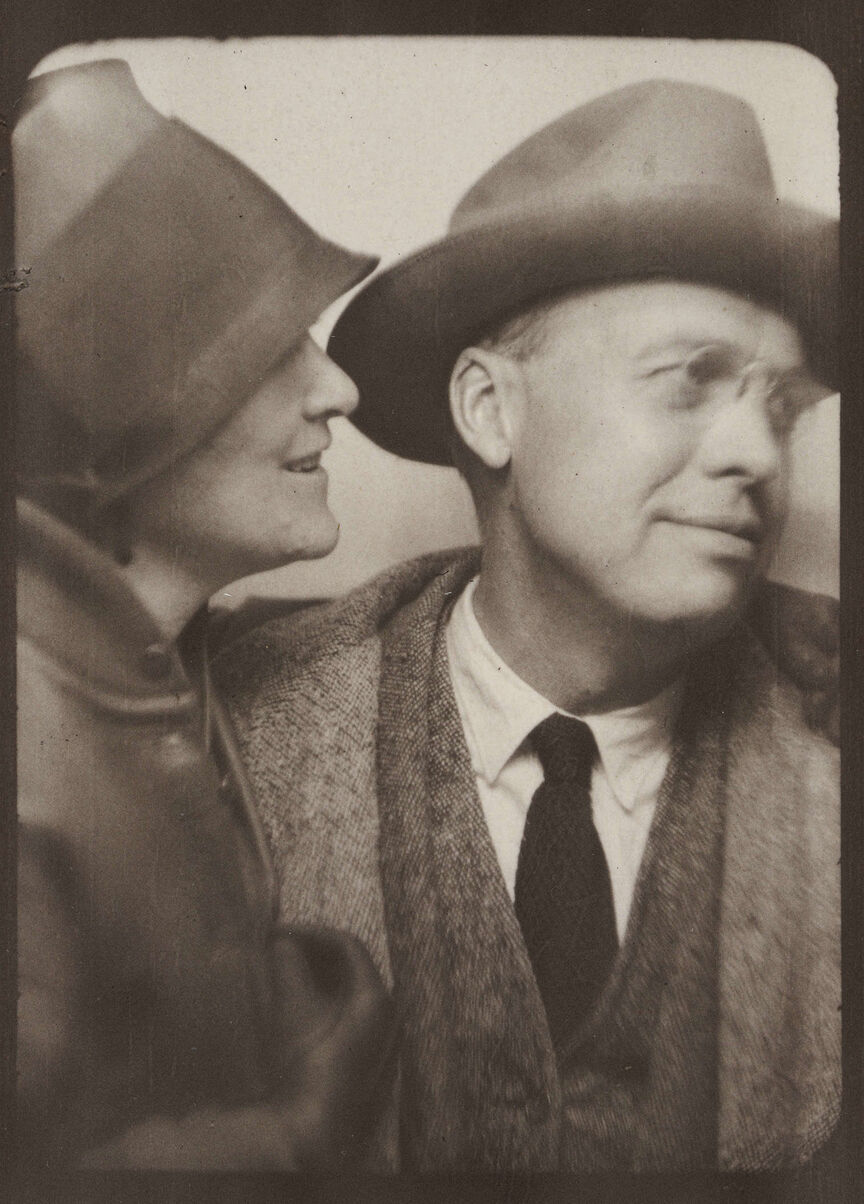The Hoppers and the Whitney
Edward Hopper’s career and work have been a touchstone for the Whitney since before the Museum was founded. In 1920, at the age of thirty-seven, Edward had his first solo show at the Whitney Studio Club. His work was included in a number of exhibitions there before it closed in 1928 to make way for the opening of the Whitney Museum of American Art in 1931. Early Sunday Morning was purchased the year of the Museum’s founding and was a centerpiece of the inaugural exhibition. His work appeared in the first Whitney Biennial in 1932 and in twenty-nine subsequent Biennials and Annuals through 1965, as well as several group exhibitions. The Whitney organized two retrospectives during his lifetime, one in 1950 and another in 1964; the latter was organized by former Curator and Director of the Museum, Lloyd Goodrich, a lifelong friend.
Edward and Josephine (Jo) Verstille Nivison married in 1924. Jo was an active artist who studied under Robert Henri and exhibited throughout her life, including in group exhibitions at the Whitney Studio Club. Outside of painting and drawing, she pursued theater, joining the Washington Street Players in 1915. She also managed Edward’s career, meticulously documenting his work in ledger books, which are now part of the Whitney’s collection, and served as the model for most of his paintings.
In the Whitney’s Collection
When Edward passed away in 1967, and Jo the next year, their artistic holdings—encompassing nearly three thousand materials—were bequeathed to the Whitney. This bequest remains the largest single gift of artwork in the Whitney’s history and represents the greatest concentration of work by any artist in the Museum’s collection.
The Edward and Josephine Hopper Research Collection
Since Edward’s death, the Whitney has mounted many exhibitions of his work and published his catalogue raisonné in 1995, a project twenty years in the making. The archival records of that endeavor have become the Edward and Josephine Hopper Research Collection. The Research Collection also includes documents compiled by Whitney curators in the course of preparing exhibitions, correspondence between the Hoppers, and with collectors.
The Sanborn Hopper Archive
In 2017, the Arthayer R. Sanborn Hopper Collection Trust donated a major archival collection of materials related to the Hoppers to the Whitney. The gift consisted of nearly four thousand items, including professional and personal records such as photographs, notebooks, correspondence, and dealer records. Now known as The Sanborn Hopper Archive, these materials represent one of three substantial archives of ephemera amassed by the Hoppers; the others are held by the Provincetown Art Association and Museum and the Edward Hopper House Museum & Study Center.
The Provincetown Art Association and Museum
The Provincetown Art Association and Museum contains material from the Hoppers’ home in Truro, Massachusetts, and documents their life on Cape Cod. Outside of New York City, the Hoppers spent the most significant amount of time in their classic house on the Cape. In 2016 The Provincetown Art Association and Museum received a gift of drawings by the Hoppers, Jo’s diaries dating between 1933 and 1956, and other archival material chronicling their lives.
Edward Hopper House Museum & Study Center
The Sanborn-Hopper Family Archive at the Edward Hopper House Museum & Study Center in Nyack, New York, holds materials on Edward’s early life and is headquartered at his birthplace and family home. Built in 1858 by his maternal grandparents, the house served as Edward’s primary residence until 1910. The house is listed on the National Register of Historic Places and the Museum is a member of the Historic Artists Homes & Studios coalition of the National Trust for Historic Preservation. In 2011, the Edward Hopper House began accepting gifts from The Arthayer R. Sanborn Hopper Collection Trust, and in 2017, the Museum established The Sanborn Hopper Family Archive. Subsequently, it also founded The Sanborn Josephine Nivison Hopper Collection to advance the scholarship and interpretation of the life and art of Josephine Nivison Hopper.

